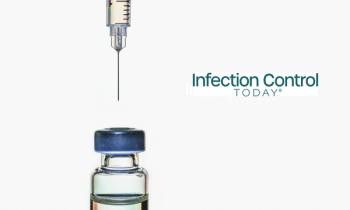
Candida auris: Why Expanded Screening Must Start at the Front Door
Candida auris continues to challenge infection preventionists with its persistence, resistance, and potential for outbreaks. New evidence shows that early, expanded screening—beginning in the emergency department—may be the key to stopping transmission before it starts.
Candida auris was first identified and became an organism of public health concern in 2016. Since that time, surveillance has been initiated nationally, and states require the reporting of positive cases to health departments for tracking. Since the identification of C auris, the CDC has published recommendations for infection control and surveillance.
Infection control guidance includes hand hygiene, environmental cleaning with an approved agent that has a kill claim for C auris, isolation precautions based on the patient care setting, and communication between patient care settings when transfers occur.1 Additionally, screening guidelines were later added to assist with active surveillance and early identification of colonized patients. C auris is transmitted efficiently in the environment as it can persist on surfaces for an extended period, and many common disinfectants are not effective at eliminating it.
Current screening recommendations by CDC focus on those who are considered high risk for colonization, including: those with an epidemiological link to an outbreak or positive case; those who come from a high risk facility, such as ventilator equipped skilled nursing facility (SNF) or long term acute care (LTAC); and those with patient-level factors such as mechanical ventilation and colonization with other multi-drug resistant organisms (MDROs).2
A recent article published in the American Journal of Infection Control by Cheng et al. presented a review of an updated screening process for C auris at an urban, acute, community hospital.3 The facility had an existing protocol, and due to a recent exposure event, the local team updated the protocol to expand screening criteria for admitted patients with the intent of preventing future exposures or outbreaks.
The facility screening criteria initially focused on admitted patients who had been in an SNF within the past month and had been on a mechanical ventilator and/or had a tracheostomy. In the second phase of the screening protocol, patients admitted from any SNF, not just ventilator-capable, were included. Also, all patients from an SNF were screened, not just those with mechanical ventilation and/or tracheostomies.
Choosing screening criteria is dependent on several factors. The CDC guidelines serve as a starting point; however, local epidemiology and transmission patterns must also be considered when identifying risk groups. Additionally, time frames are often challenging in C auris screening criteria, as there is no consistent recommendation of how far back to review a patient’s history. Some facilities screen for a year prior, while others screen for 3 months to a month, as mentioned in this article. Things to consider when getting a history are how well your patients can remember prior admissions and whether staff are aware of which SNFs are ventilator-compatible in their area.
A key point made in the article is that screening alone will not result in the appropriate disruption of transmission. Facilities also need a comprehensive infection prevention strategy and process for patient management. Once patients are identified, a follow-through process is necessary to test, initiate isolation, notify relevant stakeholders, and perform environmental disinfection.
Anyone who has been involved in an exposure or outbreak investigation will understand the level of resources involved and the significant time and energy required in that process. To decrease the risk of exposure, the goal is to initiate screening as early in the admission process as possible, ie, in the emergency department (ED). And based on the experience documented in the article, expanding screening populations and risk criteria to capture a broader range of patients could also identify cases that would not have been identified previously.
The article described that a lab culture completed the testing for patients. The ability of facilities to perform culture or molecular testing for C auris varies across the country. Smaller facilities or those in areas with low levels of cases will likely have to send out tests to reference labs or public health labs. The turnaround time for results can be several days, which limits the potential for actionable responses. If your facility must conduct testing, one key consideration is which patients will be placed in presumptive isolation while awaiting test results. Lengthy isolation while awaiting results may impact patient care and result in additional expense to the facility.
In the article, the team determined to initiate Isolation for patients on a ventilator or those with a tracheostomy, as these patients were deemed to be at higher risk based on their analysis of data and prior experiences. All other screened patients were not placed in presumptive isolation. Each facility will need to consider what will work best locally and can utilize a similar risk assessment process to determine which patients to isolate, if it is not feasible to place all patients in presumptive isolation.
Screening test results found an overall positivity rate of C auris for all patients was 2.4%. Fifty-one patients met the criteria as high risk (ventilated or tracheostomy), and of those, 17.7% were positive. When examining the patient location in the prior month, 454 patients were screened from non-ventilated capable facilities, and of those, 2 were considered high risk due to the presence of tracheostomies (but were not ventilator-dependent). Neither of those patients was positive. The overall positivity rate for the lower risk facilities was 1.1% (5 patients). Comparing overall vent-dependent and/or tracheostomy patients (high-risk) to all others, the odds ratio for having a positive C auris culture was 21.5 (P < 0.01).3
These results indicate that patients with tracheostomies and/or mechanical ventilation are at a higher risk of colonization with C auris. Facilities planning to begin screening for C auris, starting with a focus on patients with those risk factors, would be a reasonable approach to capture most colonized patients. Following the trends of local epidemiology and known outbreaks would also be critical to ensure that updates to screening criteria can be made to reflect the ever-changing transmission of C auris. Collaboration with the lab, environmental services, frontline clinical providers (including ED and nursing), and clinical informaticists to update electronic surveillance questions and order sets is a necessary step for a successful program.
References
- Infection control guidance: Candida auris. CDC Updated April 24, 2024.
https://www.cdCgov/candida-auris/hcp/infection-control/index.html . Accessed May 2, 2025. - Screening recommendations for healthcare facilities. CDC Updated April 24, 2024.
https://www.cdCgov/candida-auris/hcp/screening-hcp/index.html . Accessed May 2, 2025 - A Cheng, K Brody, J Ehni, A Gallate, S Lorin, B Camins, A Javaid. Analysis of an expanded admission screening protocol for Candida auris at a New York City hospital. American Journal of Infection Control, vol. 53, Issue 1 (2025), pp. 70-74.
Newsletter
Stay prepared and protected with Infection Control Today's newsletter, delivering essential updates, best practices, and expert insights for infection preventionists.




